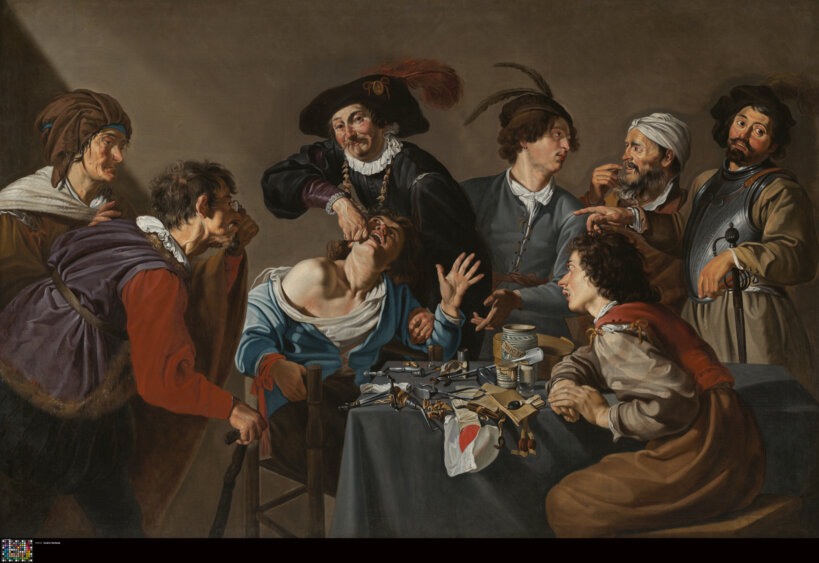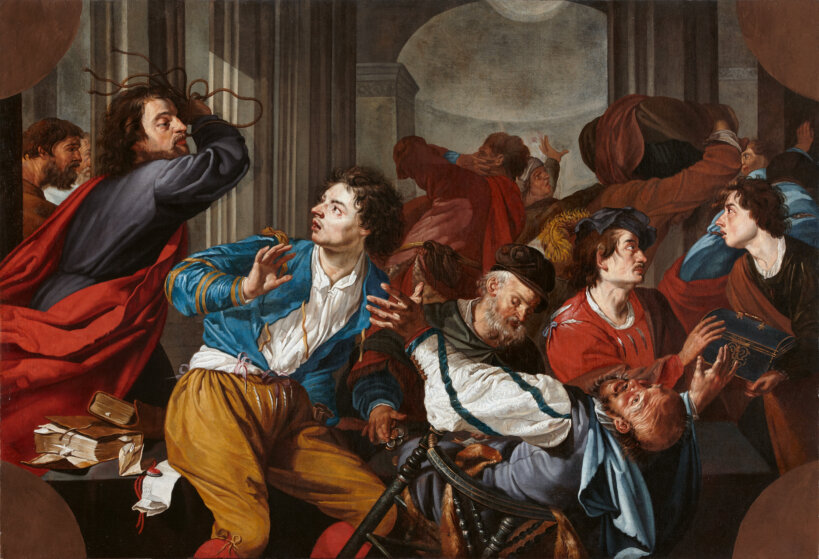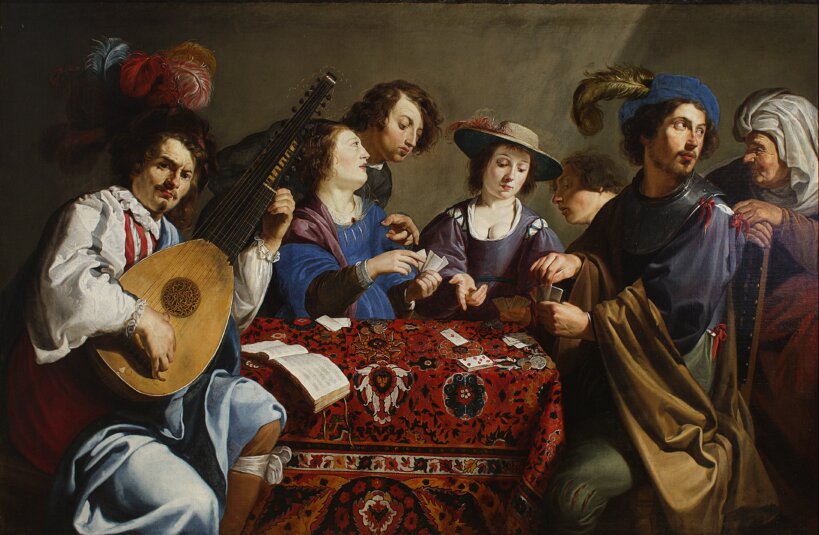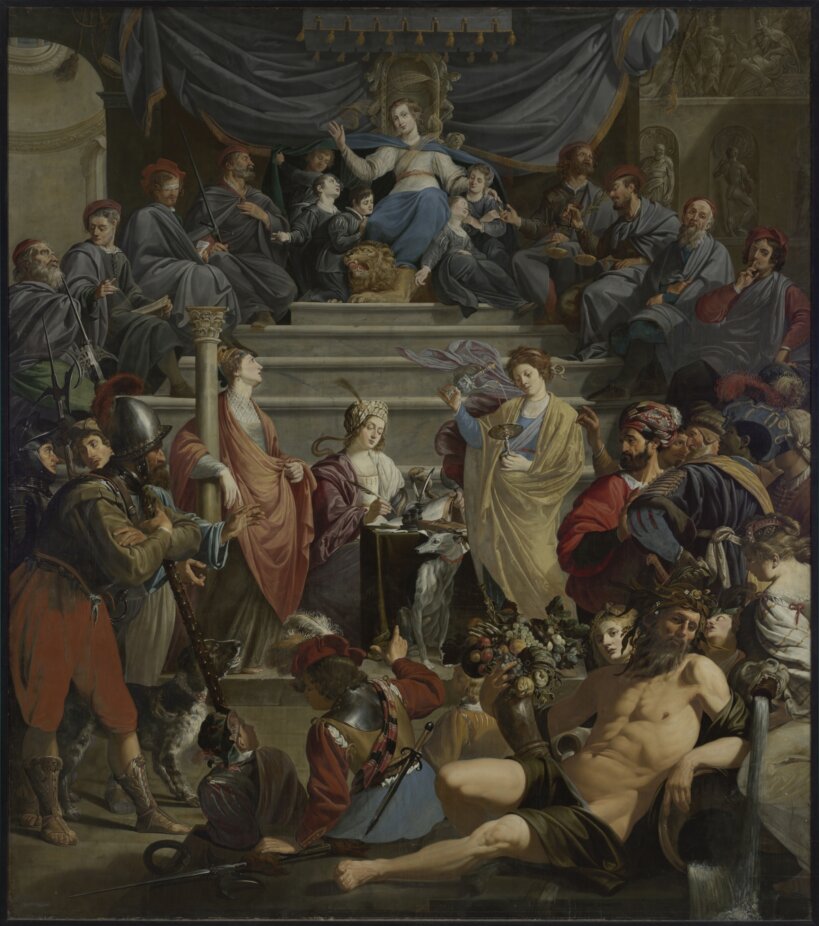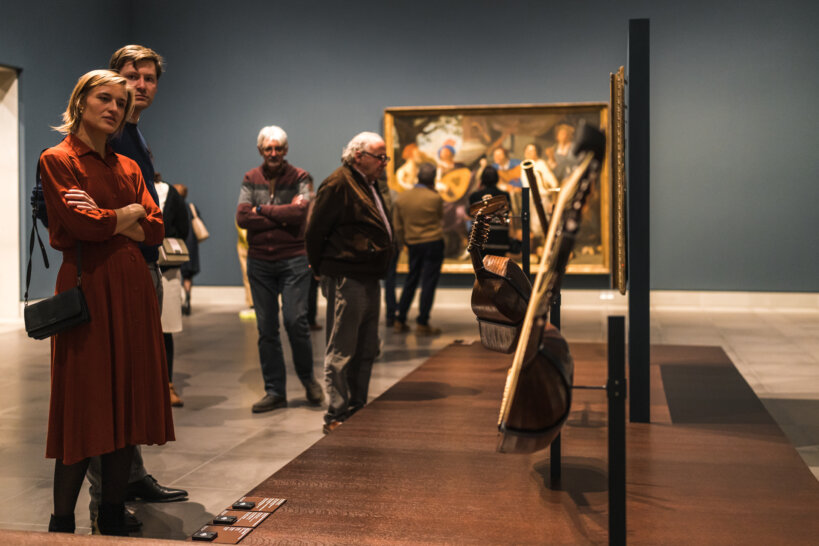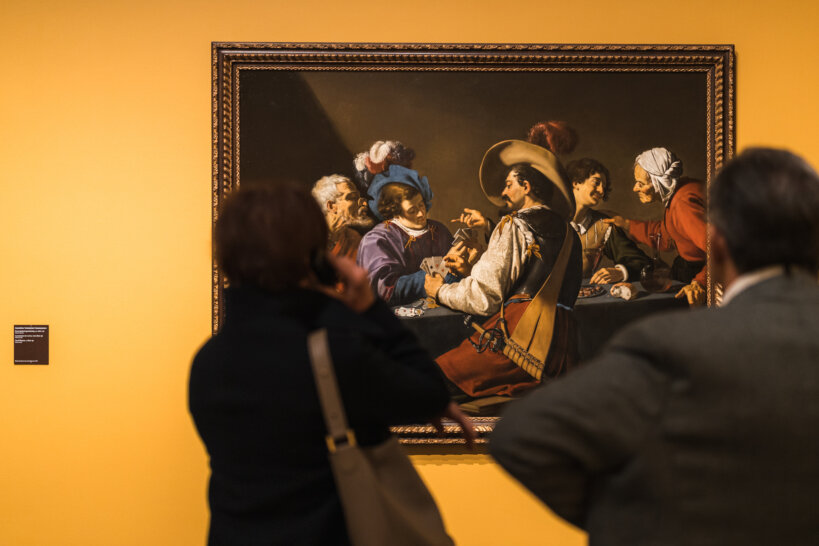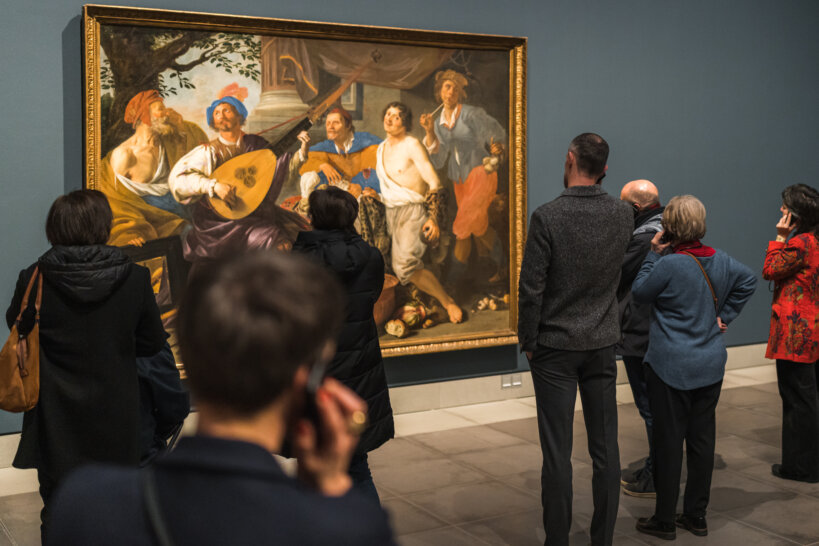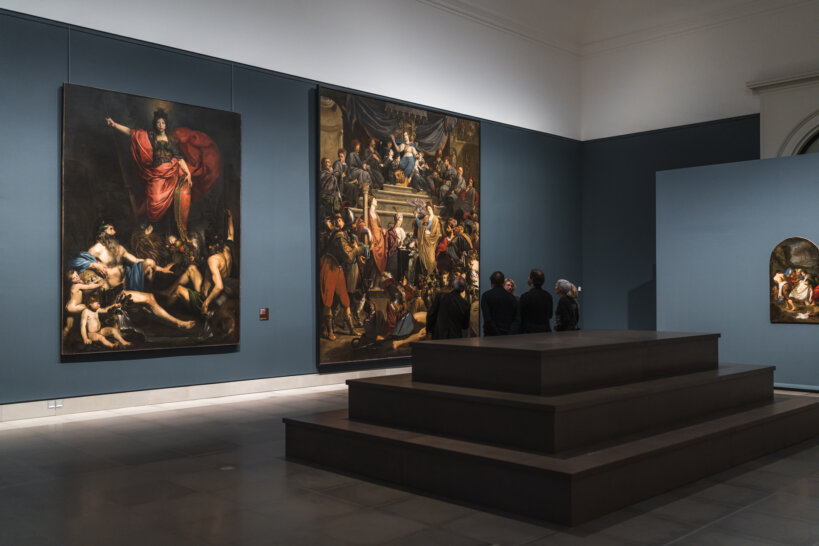On the occasion of the 225th anniversary of the MSK, we are presenting the first ever monographic exhibition on Theodoor Rombouts (1597-1637), the virtuoso of Flemish Caravaggism. Rombouts was an established figure in the Antwerp art world. But although his painting was appreciated during his short life, the Antwerp Baroque gods Peter Paul Rubens (1577-1640) and Antony Van Dyck (1599-1641) pushed Rombouts' artistic legacy into relative obscurity after his early death. The exhibition reveals Rombouts' artistic personality and places his work in a new perspective.
After his training with Abraham Janssen (c. 1573-1632), the young Antwerp native migrated to Italy at the beginning of the 17th century, where he was inspired by the revolutionary painter Michelangelo Merisi da Caravaggio (1571-1610) and his most important follower Bartolomeo Manfredi (1582-1622). Back in Antwerp, Rombouts developed his own artistic identity. He succeeded in sublimely blending Northern and Southern influences, and became an established figure in Antwerp's artistic milieu.
From his studio on the Meir, he cleverly anticipated the wishes of the public and developed into a specialist in Flemish Caravaggist genre painting. The impact of Rubens's painting style on the buyers' market led to the presence of Rubensian touches in his paintings. Rombouts' career ended abruptly, however, when he died in 1637, barely forty years old.
In Rombouts' varied oeuvre, monumental, lively and sometimes moralizing genre scenes with elegant companies and musicians stand out. He painted the scenes according to the Manfrediani method, named after Bartolomeo Manfredi (1587 - ca. 1620/1621), who elaborated on the painting style of his great example Caravaggio. They are characterised by the southern play of light and dark (chiaroscuro), by naturalism and by a great sense of drama, with close-ups and half-framed figures.
Rombouts blends in his personal colour palette of purple, red and blue tones. As the son of a tailor, he has a special eye for textiles, which he portrays almost tangibly. He also depicts musical instruments in a virtuoso manner. In his well thought-out, almost stage-like compositions, he portrays folk figures that are almost elevated by their elegant appearance and refined costumes. Rombouts likes to work with his own models: typefaces that he keeps returning to in his paintings. He sometimes turns up on his own canvases, or has his wife and daughter sit at the table.
Like no other, he knows how to present his refined, accessible folk scenes filled with musicians and merrymakers. But monumental, religious scenes and allegories with hidden political messages also belong to his oeuvre. As a Flemish Caravaggist, he unites influences from northern and southern traditions in all his works. Although this style proved to be a short-lived trend, Rombouts' impact on the genre painting in the Spanish Netherlands can't be underestimated.
For this exhibition and the accompanying catalogue - in both cases, the first time that Theodore Rombouts has been placed entirely in the spotlight - the MSK carried out an extensive search for Rombouts' core oeuvre. Works from private collections, churches and museums in Europe and the United States are brought to Ghent, and several paintings were specially restored for the occasion with the support of the museum.
The result is a surprising, new total picture of the artist as a Flemish Caravaggist. The visitor will for the first time be able to acquaint himself with the painter's core oeuvre, in dialogue with works by important contemporaries such as Bartolomeo Manfredi, Valentin de Boulogne (1591-1632) and Hendrick ter Brugghen (1588-1629). Through a thematic arrangement, the exhibition focuses on all the various aspects of Rombouts' painting. In this way, it brings us closer to the man behind the work: an intelligent artist who was happy to be enchanted by the talent of his colleagues, but who also developed a very recognizable own artistic identity, both for his clients at the time and for us today.
The MSK has a special bond with the Antwerp painter. In 1860, the 'Allegory of the Five Senses' (1632) was the first work by an old master to be acquired by the museum. In the meantime, the painting has become a real crowd pleaser. MSK also has two other important works by Rombouts in its collection: 'Allegory of the Second Bench of Aldermen of ‘Gedele’' (1627-28), Rombouts' largest canvas, and 'By the Tooth Puller' (ca. 1628), a typical Carravagesque warning against swindlers. The latter is being restored especially for the exhibition.

